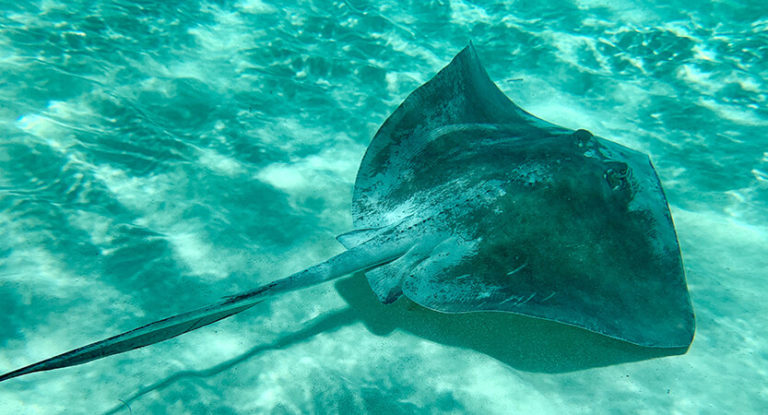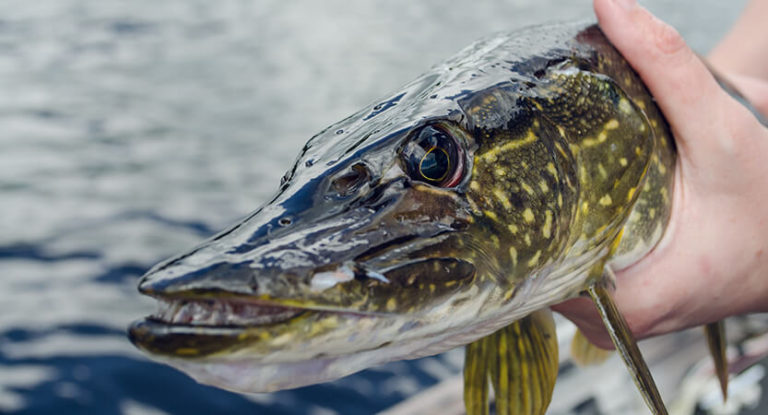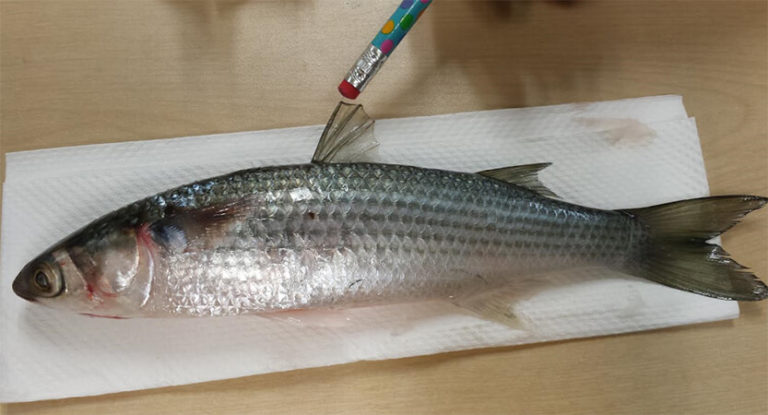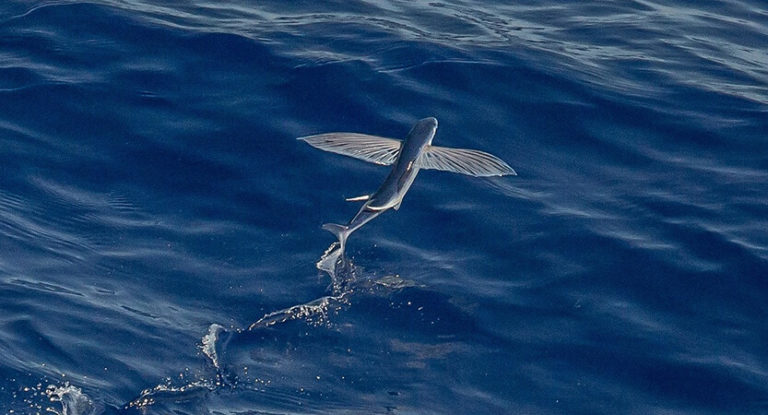If you have never tried fishing on ice, but intend to master this type of fishing, our today’s article is guaranteed to give you a lot of necessary information. The fact is that fishing with a jig is the easiest to learn, widespread and budget type of winter fishing. At first, special financial costs are not required, the filigree possession of the tackle is also. In a word, this option is available to everyone and everyone who is interested in mastering this exciting hobby.
In this post we will go over the main aspects of using this versatile piece of equipment. We will learn how to assemble tackle for different types of fishing, select and combine baits, choose the optimal lead and much more. It is quite difficult to cover all the nuances of mormishing in one article, but it is quite possible to designate a starting point for a novice angler. Next up is reading narrow-topic articles, watching videos and a lot of practice!
Here is an overview of the content of this tutorial, feel free to jump to any section you care about:
For more fishing instructions, take a look at these popular Trizily links: Best Underwater Fishing Cameras, Best Bass Fishing Lures.
The essence of jig fishing
A jig in the classical sense of the word is an artificial bait imitating a miniature amphipod crustacean. This crustacean (along with the bloodworm) is the basis of the food base for all peaceful and some predatory fish in the winter. True, modern lures of this class have significantly moved away from living prototypes, having acquired very intricate shapes and colors. However, the essence and basis of the design remained the same: a metal “body” playing the role of a spoon and a load, and a hook implanted into it (or several).
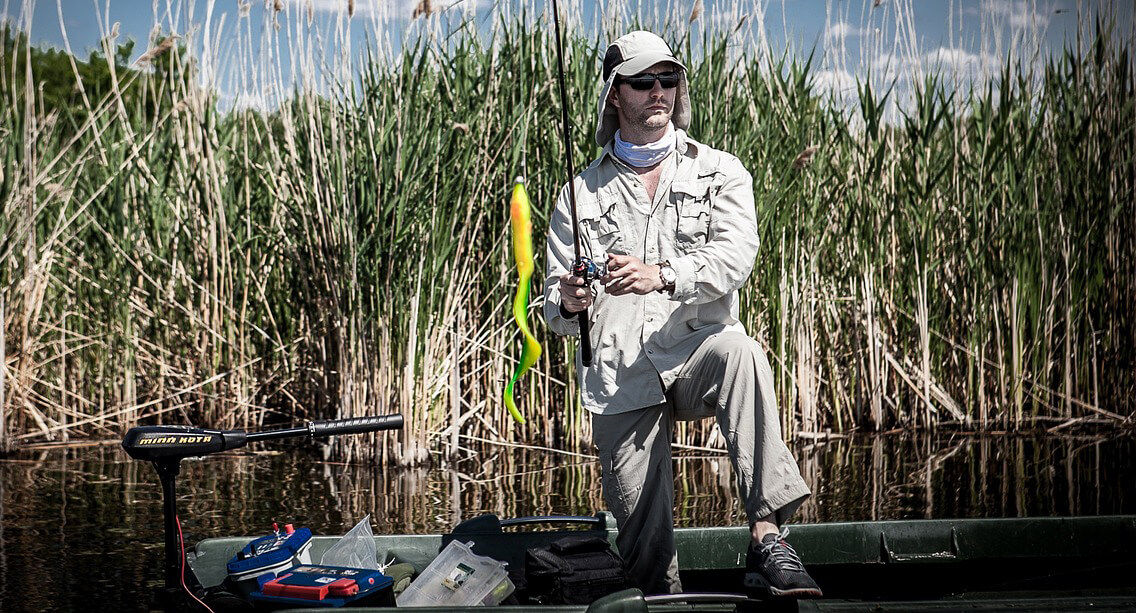
Initially, jigs were intended exclusively for bait fishing: they were necessarily used in tandem with edible baits. Fishing was carried out mainly stationary: the rod was installed above the hole, on which the actions of the fisherman ended. Later, fishing in the posting appeared: during it, the angler does not let go of the fishing rod, manipulating it and playing with the bait. This serves to further attract fish – it reacts to both movement and acoustic signals.
Winter harness fishing has become so popular that it initiated the emergence of a new class of lures – rewound lures. These are jigs that work exclusively at the expense of the game – the presence of edible bait is not assumed at all.
In addition, such lures are also used for alternative types of fishing. For example, to catch white fish in a strong current on bottom gear (“Chopper”, “Skirted”), lures of this class are used on diverter leads. In this case, a large weight is hung on the main line, fixing the rig relative to the bottom, and several light jigs are mounted on the lead-off lead. There are other options for rigs.
By the way, the jig is successfully caught in the summer, mainly in a plumb line from a boat or a steep bank. In a word, we have before us a truly universal bait, you just need to learn how to rationally choose it and use it wisely when fishing.
Types of jigs
The first jigs were exclusively handicraft. For their manufacture, fishermen used mainly lead or its alloy with tin – you cannot cope with hard metals at home. Now the industry is in a hurry to keep up with the needs of anglers, but many fans continue to make or at least modify the bait with their own hands.
As mentioned above, all jigs can be divided into two broad classes: for use with and without bait. Bezels are usually brighter, more visually attractive and more intricate in shape, because they represent a single whole in the eyes of the fish, seductive and potentially edible.
Most bait jigs are simple droplets, cones or balls, the main task of which is to deliver edible bait to the bottom and hold it at a selected point.
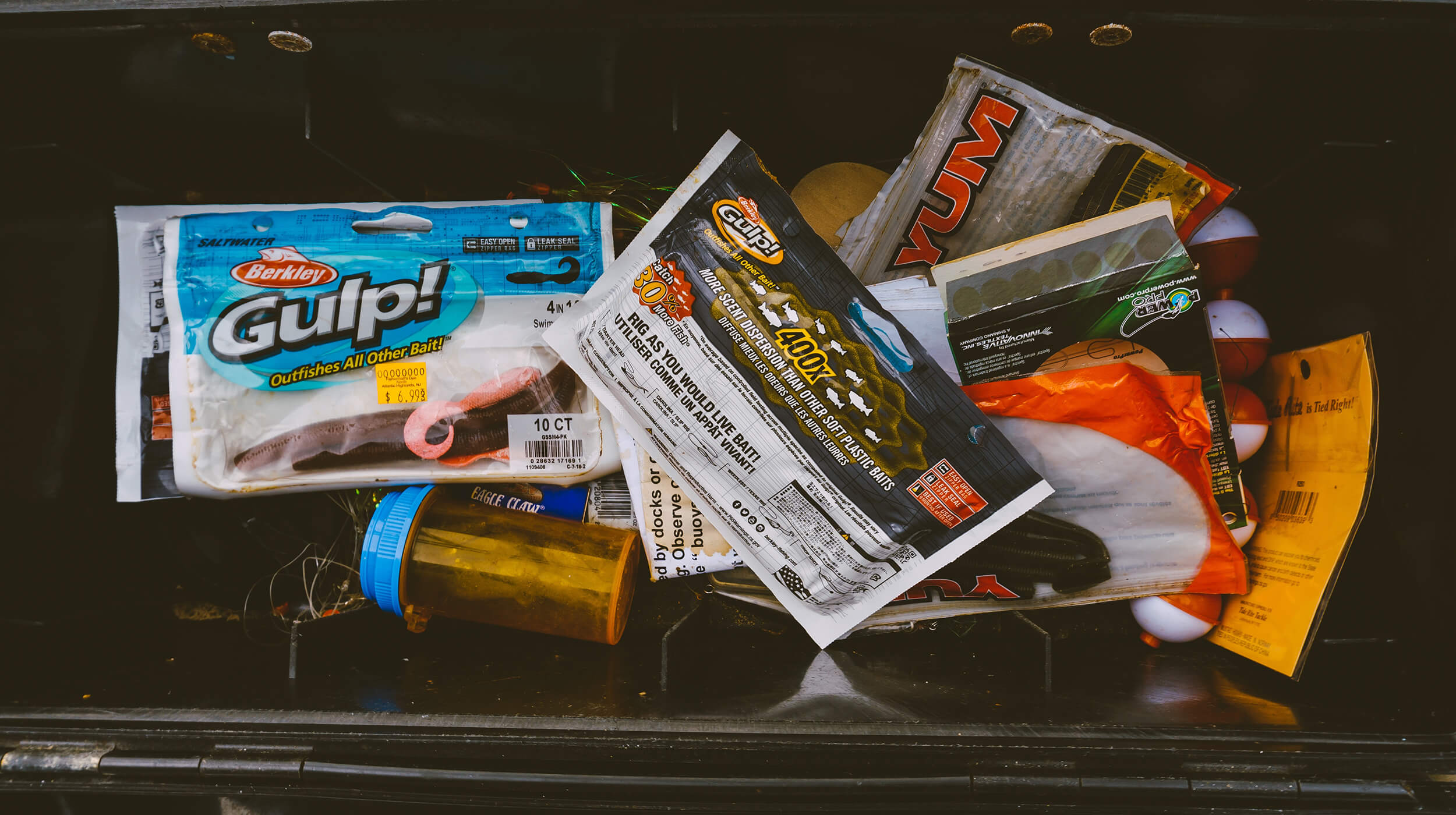
Materials
Most jigs are still made of metal. In no-nozzle fishing, lead and tin jigs are actively used, but tungsten lures should also be present in the arsenal of a modern winter angler. They cost an order of magnitude more expensive, but when fishing with the flow or at considerable depths, it is problematic to do without tungsten frames. The fact is that tungsten is almost three times heavier than lead, and such a jig with a modest volume has a significant mass.
The highest quality baits are considered to be made from a solid bar, and not from powdered metal. The vast majority of factory rewound casings are made from steel and alloys, but there are tungsten and lead options. Experienced fishermen sometimes make real works of art from ordinary lead plates – it is impossible to work with tungsten at home.
Plastic “fireflies” can be attributed to a separate category. They are lightweight and usually play an auxiliary function when fishing at great depths and at night.
Color
Contrary to popular misconception, the color of the bait does not greatly affect the fishing performance. The basis of the arsenal of the fisherman is the lures of classic colors: silver, golden, black. By the way, white fish go well for the black jig during the deaf winter period (if it goes for anything at all).
However, manufacturers of lures are vying with each other in the degree of imagination in terms of coloring jigs, especially for snub fishing. Yellow, orange, green colors with longitudinal or transverse stripes prevail. And all kinds of bright “decorations” are hung on the hooks of the rewinder to indicate the point of attack: beads, pieces of cambric, colored threads, and so on. The perch is especially partial to bright colors.
In conditions of poor visibility, variants coated with fluorescent compounds show themselves well. They work especially effectively on pike-perch, but other predators, and sometimes peaceful fish, do not remain indifferent to such illumination.
Size, weight and configuration
The mass of most moths ranges from 0.1 to 0.3 grams, with a diameter of about 2-4 mm. The bezels are many times larger and heavier, because they are perceived by the fish as a single whole – potential prey.
The configuration of winter jigs for bait fishing is usually simpler, because their function is mainly to make the natural bait (usually bloodworm) heavier and keep it at the desired point . They are in the shape of a ball, a pellet, a pear, a drop with an appropriately sized hook.
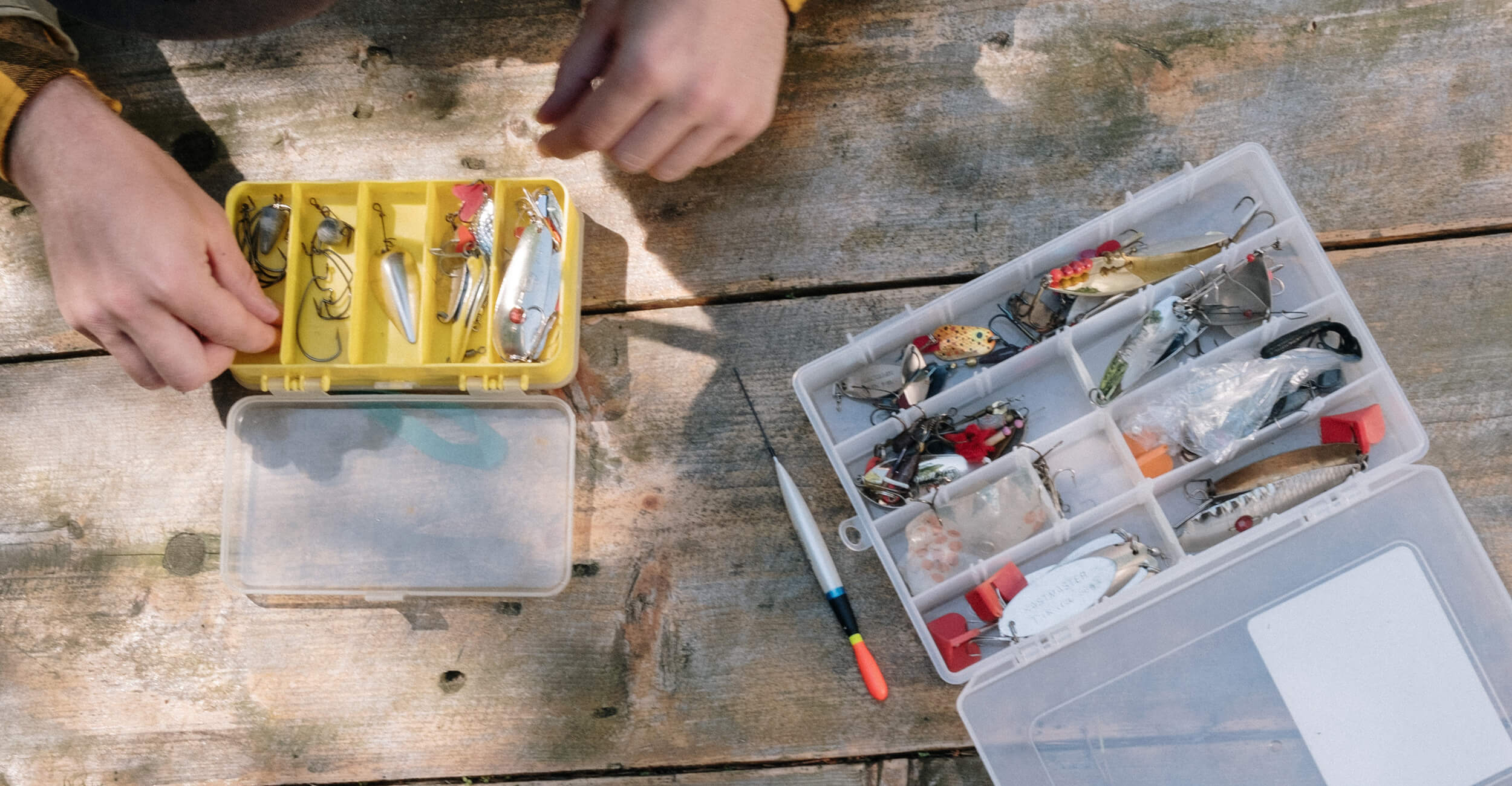
The design of the rewinder is much more intricate, because the shape and colors are designed to provide an attractive game in terms of potential prey. Let’s dwell on the most common options:
- Sausage . A cut square or round metal bar.
- Dreissen . Heavy bait with nodding play, effective on white fish.
- Owl . Basically, it is a flattened micro-forest targeting zander and perch.
- Ants, bugs, nymphs . Elongated lures with a characteristic bend, sometimes segmented, are the most popular and versatile option.
- Goat . Active fish of all kinds are caught on this type of jig. A characteristic feature is two hooks rigidly fixed at an angle to each other.
- Kaplia-uralka . A very popular bait, shaped like a curved eggplant.
- Cobra . One hook planar concave bait designed for gliding animation.
- Cuttlefish . It is shaped like the aforementioned cobra, but has two hooks, like a goat.
- Devil . A very popular universal lure with a lot of modifications. The body is elongated, of varying degrees of “elongation”, equipment – usually three hooks soldered into the body of the bait or a freely suspended tee.
- Carnations . The simplest elongated lures, which, in fact, are soldered on a hook and equipped with large accessories in the form of cubes or bright beads. The notorious “cat’s eye” is from the same opera.
- Witch and other heavy bezels . In principle, these are no longer quite jigs, but, rather, spinners aimed at catching a predator from the bottom. The basic principle of fishing is tapping on the bottom surface, which provides strong acoustic signals.
To catch a large predator downstream, they often use super-heavy jigs weighing up to 100 grams with an infusion of a worm, a piece of fish, and so on. This is a separate class of lures that requires special handling and proven skill.
Tackle device
The device of winter tackle for mormishing cannot be called complicated: a winter short rod, line, signaling device and the bait itself. It would seem nothing complicated, but it is not so easy to combine these elements into an efficiently working system: they must be optimally matched to each other. Moreover, the leading element in this case is the bait: its weight, configuration, the presence / absence of a nozzle determines the characteristics of other components of the rig.
In the cold, picking up the elements is quite problematic, and you don’t want to waste time on it, therefore, experienced winter roads take several fishing rods with different jigs for fishing at once, and already on the spot it is determined which one is better suited to the current conditions.
Two or three equipped gear is enough for a beginner. They are not too expensive (remember, we are talking about amateur fishing), so you can afford them from the start.
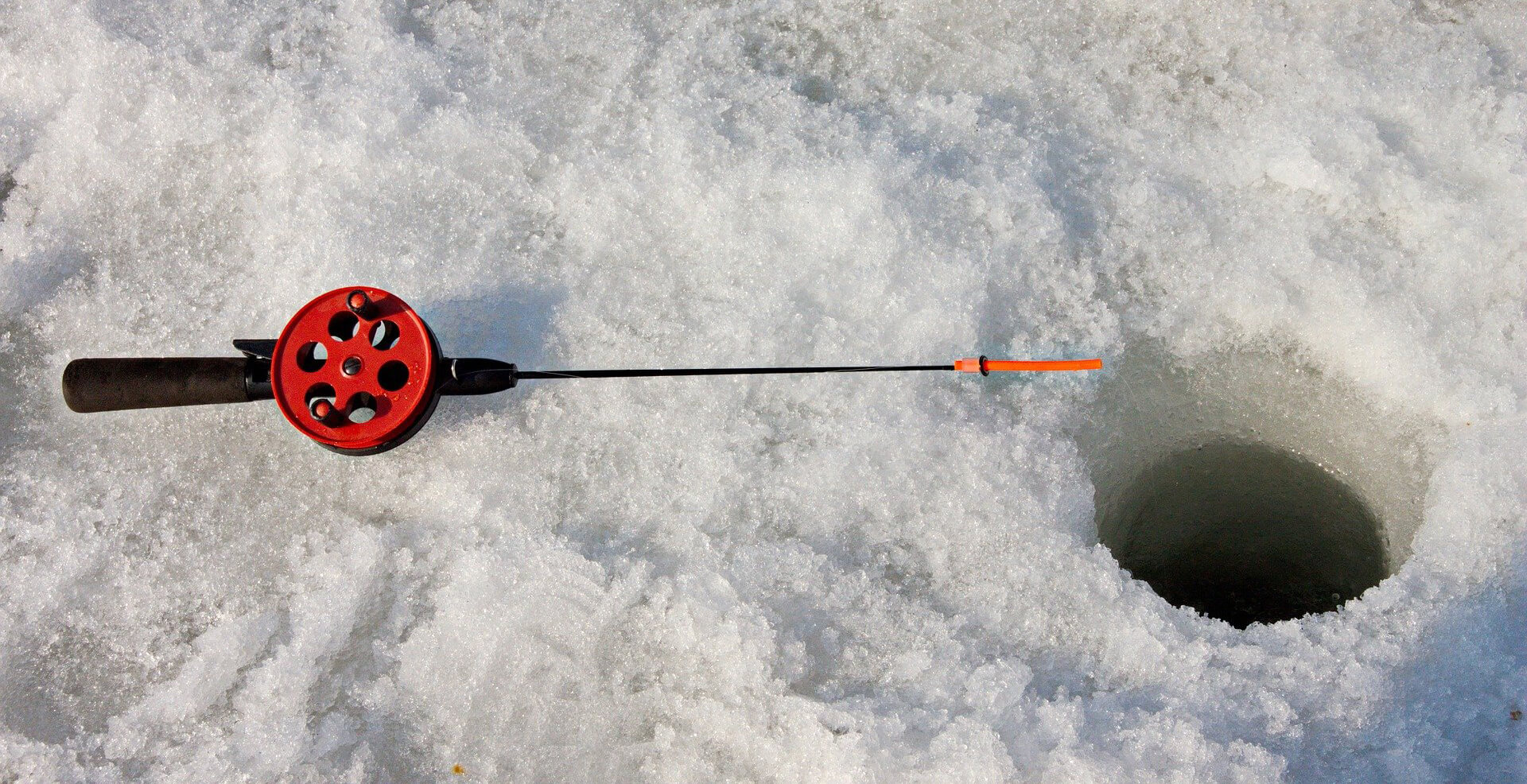
Alarm clock
The main and most expensive piece of equipment is a rod, although the price of the issue is low here too – about 70 dollars maximum. The rod length is maximum 30 cm, the weight – the less the better (from 15 to 120 grams). Especially important is the ease when fishing for the game – stationary you can fish with heavier tackle.
The most widespread type of fishing rod is the “palm rod”, which is comfortable in all respects (a reel with a closed body is also a handle). Not bad and axle-less options with a reel-handle, which is a ring. If you are going to use a stationary bait jig or catch a large predator for the game, you can use heavier fishing rods with reels distanced from the handle (the so-called winter spinning rods).
By the way, some anglers, for the sake of lightness of tackle, refuse reels in principle. In this case, a structure for winding the fishing line (hooks or cuts) is provided on the cork or foam handle. However, you need to understand that it will not work to protect the open fishing line from freezing, and this automatically entails a loss of sensitivity and an increase in the weight of the tackle.
Fishing line
The main criteria in this case are the maximum carrying capacity with the minimum diameter, as well as stealth in the water. The thinnest rig should be used in the wilderness, when the fish is inactive.
The most commonly used special winter monofilament or fluorocarbon. Fluorocarbon is usually more expensive, but when fishing with a jig, line consumption is minimal, so you can afford such a “luxury”.
In mormishing, fishing line with a diameter of 0.05-0.12 mm is used . However, the thinnest thread is used mainly by athletes, and is rarely used in amateur fishing. It is recommended to equip three tackles with fishing line of different diameters: 0.07-0.08 mm, 0.1 mm and 0.12 mm. The second option is considered the most versatile and suitable for a wide range of conditions. The first option is optimal for fishing at considerable depths and in the wilderness, the second – for shallow depths and rather heavy lures.
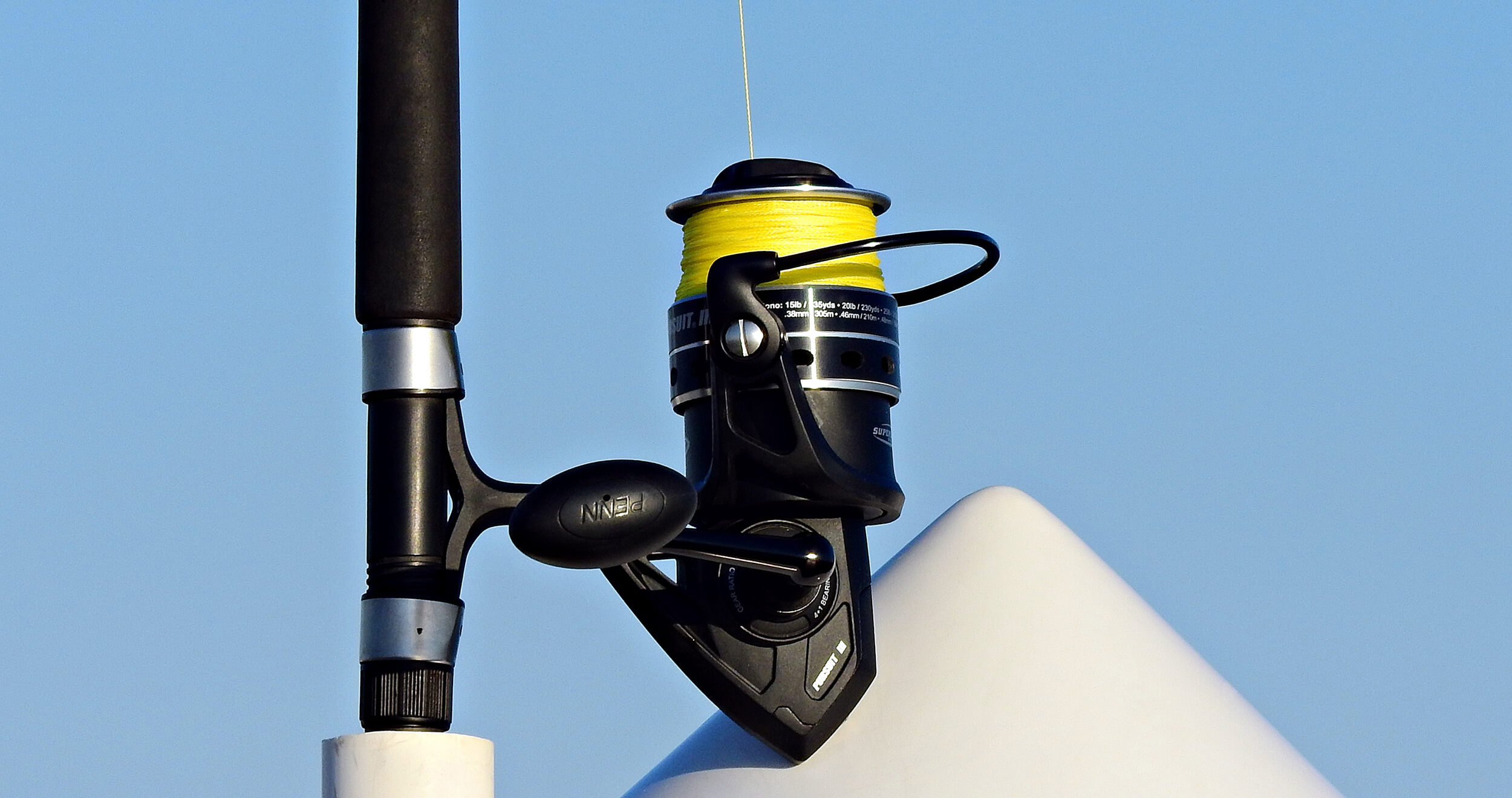
Signaling device
In most cases, the signaling device is played by a nod (gatehouse). This element was previously made from boar bristles, now mainly from dacron or metal tape. Dacron nods are considered to be more sensitive, which provides the most realistic play and quick reactions, but in strong winds it is difficult to distinguish a bite.
The length of the gatehouse is selected depending on the type of animation: the longer the nod, the softer and lazier the game. For example, for a bream, a longer gatehouse is required, for a lover of a sharp game of perch – a shorter one. It is even more difficult to find a nod for a rewinder: most of the moments are comprehended on their own experience, because each lure of this type behaves differently in the hands of different anglers.
It is believed that the cock is configured correctly, if the weight of the lure it is bent at an angle of about 45 to S. But this is again not an axiom: the main indicator is configured correctly nod performance, and it can be understood only by experience. Moreover: in non-nozzle fishing, the most sensitive tackle is often used without a reel and a nod, because sometimes the animation is set even by tapping your finger on a miniature handle made of foam or cork.
Stationary fishing with a bait jig can also be float fishing even in winter and ice conditions, and the alarm is adjusted for ascent. As in all other cases, the carrying capacity of the float is selected according to the weight of the bait.
Imposing a jig
There are two types of non-attachment jigs: with a hole in the middle and a special eye for fishing line. Cambrics are usually inserted into the holes in the body of tungsten baits so that the very hard metal does not grind the line.
The easiest way to tie a jig with a hole is with a regular self-tightening loop. It fits very simply:
- Thread the end of the fishing line into the hole.
- We form a loop near the forend and press it against the hook.
- We make several turns of the line around the forend.
- We pass the tip into the loop.
- We moisten the fishing line, tighten the knot, cut the tail. The knot is formed on the hook!
If the lure has a special eyelet, you can use the previous option by passing the line through the ring. In this case, the bait will be positioned at an angle, which is certainly good for fishing with a rewinder: in this case, the hook should not be directed straight down, but at an angle in order to get into the mouth of the fish when attacking.
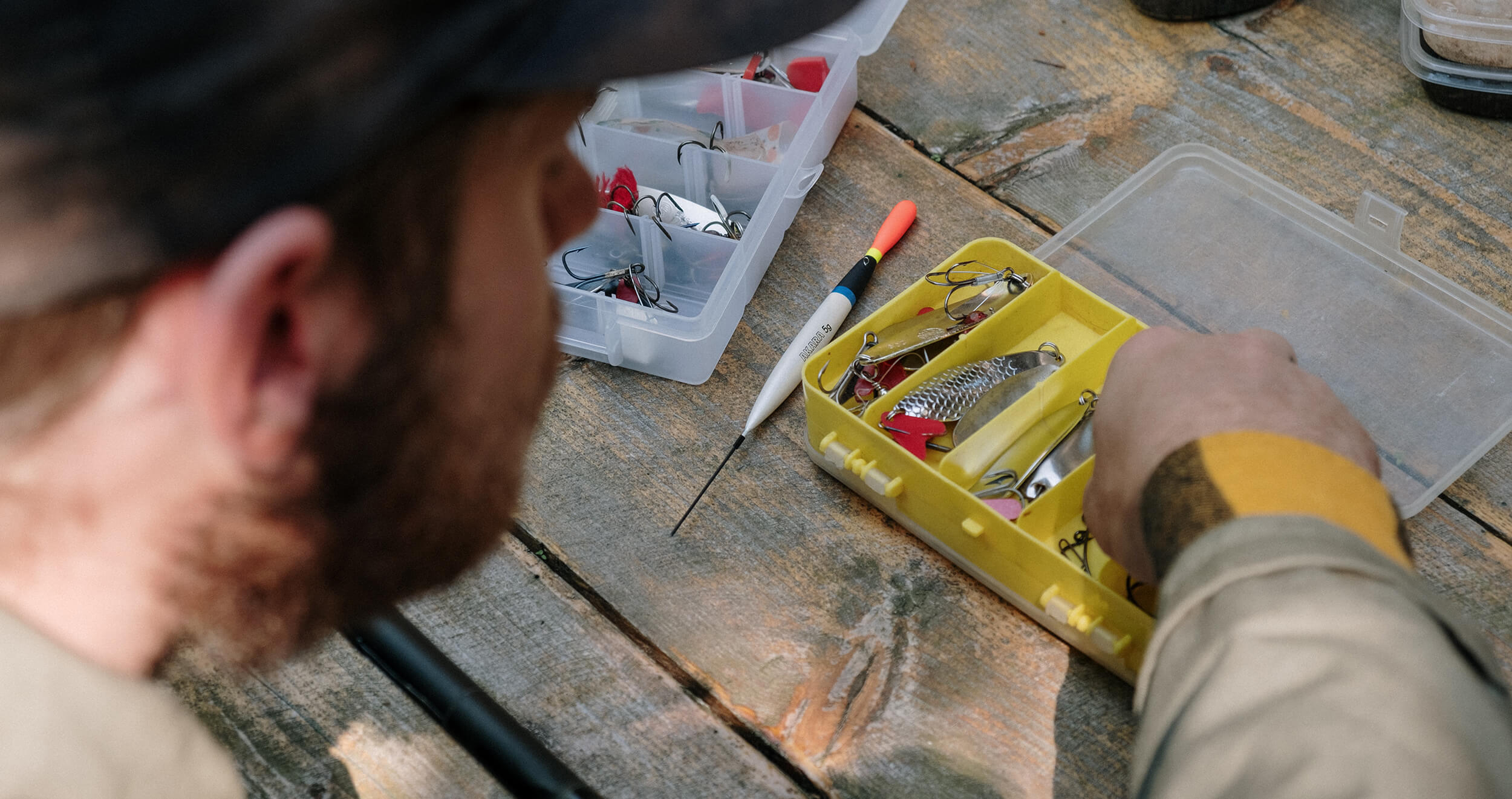
If you fish with a classic jig, it is impossible to predict the catchability in advance: sometimes the fish likes this angle, and sometimes it is better to fix the bait with a natural vertical plumb line. This can be done with the simplest palomar:
- We form a loop from the fishing line and thread it into the eye of the bait.
- Tie a loop into a regular knot with the main line.
- We pass the hook and all the bait through the loop.
- We form a knot, moisten the line, tighten, cut off the ends.
Sometimes, more complex installations of several lures are used (on the main line or a diverter leash), but at first it is better to do with one jig and direct efforts to learn how to handle it correctly.
In the arsenal of each angler there are many times tested knots, which he considers the most reliable. Therefore, we have given here only two of the simplest options available even for a green beginner.
Site selection and preparation
The choice of a place for winter fishing is determined by both the chosen tactics and the peculiarities of the seasonal behavior of the fish. If we take the general principles, then according to the first ice, the most promising areas are along coastal thickets, edges and dumps, near islands of vegetation, snags, and so on. In the wilderness, the fish moves to greater depths and practically does not move, and closer to the ice drift begins to show activity throughout the reservoir (this is especially true of the predator).
When fishing with a stationary bait jig, the choice of a promising place is especially important, but in winter it is difficult for obvious reasons. In this case, knowledge of the topography of the reservoir, obtained in the summer or the presence of an echo sounder, will help a lot. In this case, you need to determine a promising place, drill several holes and feed. Preference should be given to compositions with the addition of animal components, distributed in the water column, and at significant depths, use special winter feeders.
Fans of fishing on the game on the first or last ice often use the active search method: they saw a visually attractive place, drilled holes, fished, went further, repeated the manipulations. In the wilderness, it is better to refuse such tactics: in the first place comes a careful selection of location, bait, experiments with baits and animation techniques.
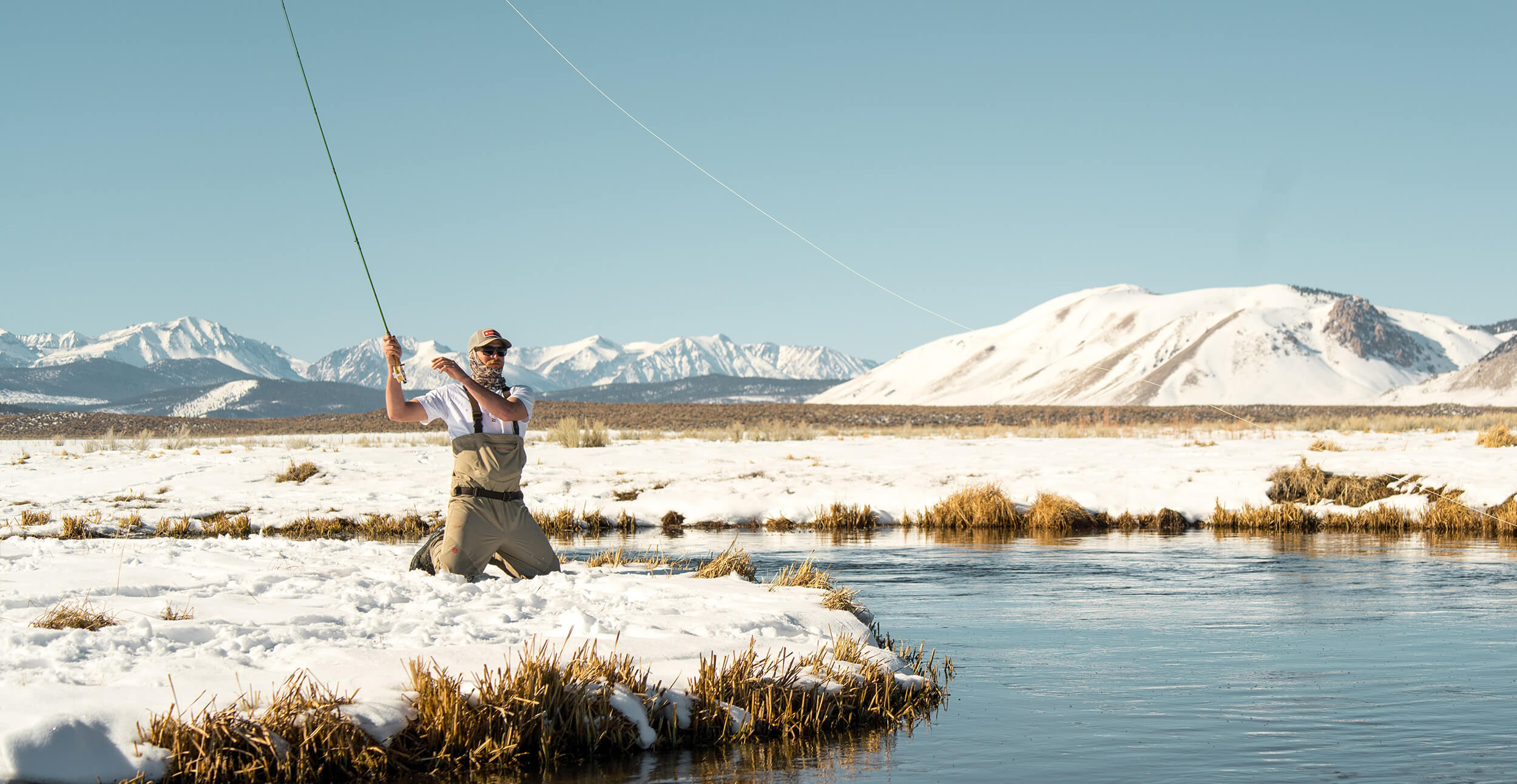
Stationary jig fishing with a nozzle
Bait fishing involves the use of bait: in the overwhelming majority of cases, bloodworms (one, several or a bunch), but in some cases they use a worm, maggot, beetle larvae, natural amphipod crustacean and so on. On super-heavy jigs, pieces of fish, tulka or even live bait are planted on the predator.
The simplest option, which is optimal for a beginner, is stationary fishing “on a riser”: you do not need to animate the bait, cut holes, place fishing rods and watch the float or nod. The most acute moment is the precise adjustment of the alarm for lifting and quick response to the bite. However, it should be borne in mind that here, too, there are a lot of nuances that are comprehended only through experience, besides, catching with a game is a priori more effective, especially in deafness.
The fact is that in winter the fish is less active and more cautious, so the same half-asleep bream or crucian can immediately spit out the bait, feeling a hook in its mouth. And reacting instantly is problematic: usually an angler serves several holes with tackles.
Mormishing for the game
Active mormishing is much more difficult. The greatest skill from the fisherman will require the use of a rewinder, because in this case the lion’s share of success depends on the skill of the fisherman. There are no most catchy jiggers: all the ratings, supposedly compiled by professionals of winter fishing, in this case do not stand up to criticism. In this case, it is the individual skill, careful preparation of the tackle and the ability to adapt to the current conditions of the reservoir – everything else is secondary.
Let’s analyze the basic principles of winter fishing with animation of a jig in stages. This is too broad a topic, so we will focus on general information that is most relevant for a beginner – the nuances can be comprehended in practice during the first trips to the ice.
Tackle handling rules
There are few universal rules for handling a fishing rod, since every experienced angler has his own style, worked out over the years. However, there are some starting positions for a beginner to consider.
Right-handers usually hold the rod with only one, right hand, manipulating it or tapping the tackle with their fingers. But sometimes they help themselves with their left hand, placing a whip between her thumb and forefinger. In this case, with active fishing, the right hand will set the amplitude of the jig’s movements, and the left – their frequency. We remind you that the tackle is very delicate, sensitive even to micromovements, requiring delicate handling. Parasitic movements of your own limbs to the sides should be excluded as much as possible: the bait should move vertically or at a slight angle to it (if we are talking about bait fishing).
It should be borne in mind that you will have to perform small monotonous movements, so you need to keep your hands as relaxed as possible. In the process of fishing, it is recommended to rest your elbow on your thigh and periodically shift the tackle from hand to hand in order to avoid limb leakage. You can support the rod with your other hand, giving it additional support and relieving accumulated fatigue.
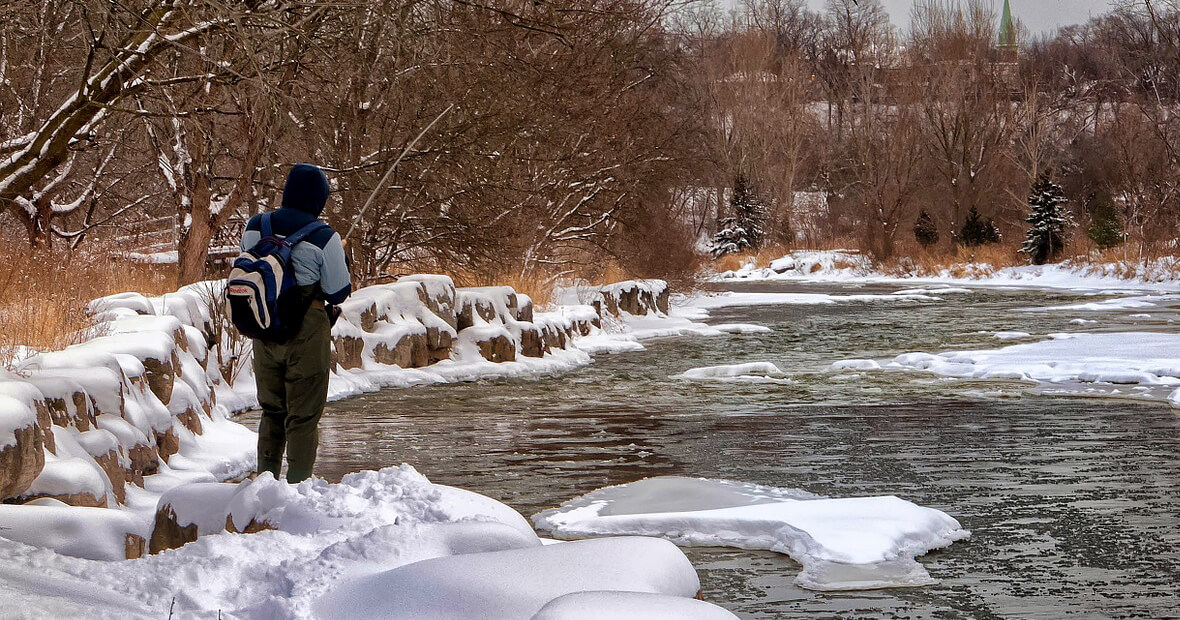
Most efficient wiring
Universal postings do not exist – this is an axiom. The choice of animation depends on many factors: the presence and strength of the current, wind conditions, the characteristics of the gear, the time of year, the behavior of the intended prey, and so on. It is objectively easier to fish with a jig with a nozzle: mainly vertical movements of the bait are envisaged, while rewinding, depending on the shape, you can set a more intricate trajectory.
You should master a few basic postings and vary them as needed:
- Step . Universal harness for most jigs, quite easy to learn. The bait sinks to the bottom, and then rises sequentially with a pause at each “step”. The lift of the rod when overcoming each step can be 0.5-3 cm.
- Saw . In this case, the bait moves along a trajectory that resembles the teeth of a saw: ups and downs alternate. Pauses are provided both at the top and bottom points.
- Shaking . The rod makes shaking movements with a whip in a vertical plane. The posting is good for catching passive fish with any jig in the bottom layer.
- Dribbling . It resembles a shake: all the same high-frequency vertical movements of the bait. Usually, dribbling is done by tapping the rod with your finger.
- Uniform rise . Wiring is difficult to perform (only an experienced angler can evenly lift the jig from the bottom), but it works well for a trophy predator. You can intersperse the rise with twitching through verified, even pauses.
- Pendulum . The wiring is mainly used for rewinderless with their own game. The pendulum is provided by the rotational or oscillatory motion of the whip.
- Tapping . Tapping can be carried out according to various schemes: once for several small rises with a twitch at the top point or after a sharp rise from the bottom to a height of up to 30 cm. As a result, a cloud of turbidity is formed and acoustic signals are generated. On heavy jigs like bulldozer they catch only by tapping, and in this way they predominantly catch a large predator.
All of the above are just basic postings that can and should be modified depending on the conditions. You can accelerate or slow down, change the frequency, amplitude and duration of pauses. By the way, the closer to deafness, the longer the pause (up to half a minute).
Bite and hook
It is much more difficult to recognize a bite during mormishing than in the same float fishing. Nod movements can be caused by the angler’s movements in the retrieve, wind and many other factors. You can correlate the nod signal with the bite only as you gain experience. It is especially difficult to recognize a bite in a non-bite tackle: there is basically no signaling device, the bite is transmitted directly to the hand. It is clear that you cannot catch a bite in thick mittens, with numb hands too, so the problem of freezing fingers is very, very urgent.
Often, the fish simply touches the jig, not even thinking to attack it, and the angler identifies the signal as a bite. What can we say: a certain percentage of idle sweeps are available even for seasoned winter roads, so you should not make a tragedy out of this.
Winter fishing with a jig (especially with a rewinder) requires an instant reaction: a fish that senses something is wrong instantly gets rid of suspicious bait. Therefore, you need to hook immediately and quite sharply, exclusively with a brush. It is optimal for the bait to rise by 30-40 cm during the hookup (naturally, at idle speed), so that you can immediately return it back until the trophy interested in it disappears back home. Fishing conditions can be different (depth, extensibility of the fishing line, weight of the bait), therefore, these centimeters can only be measured empirically.
If the hooking turned out to be effective, let’s start playing.
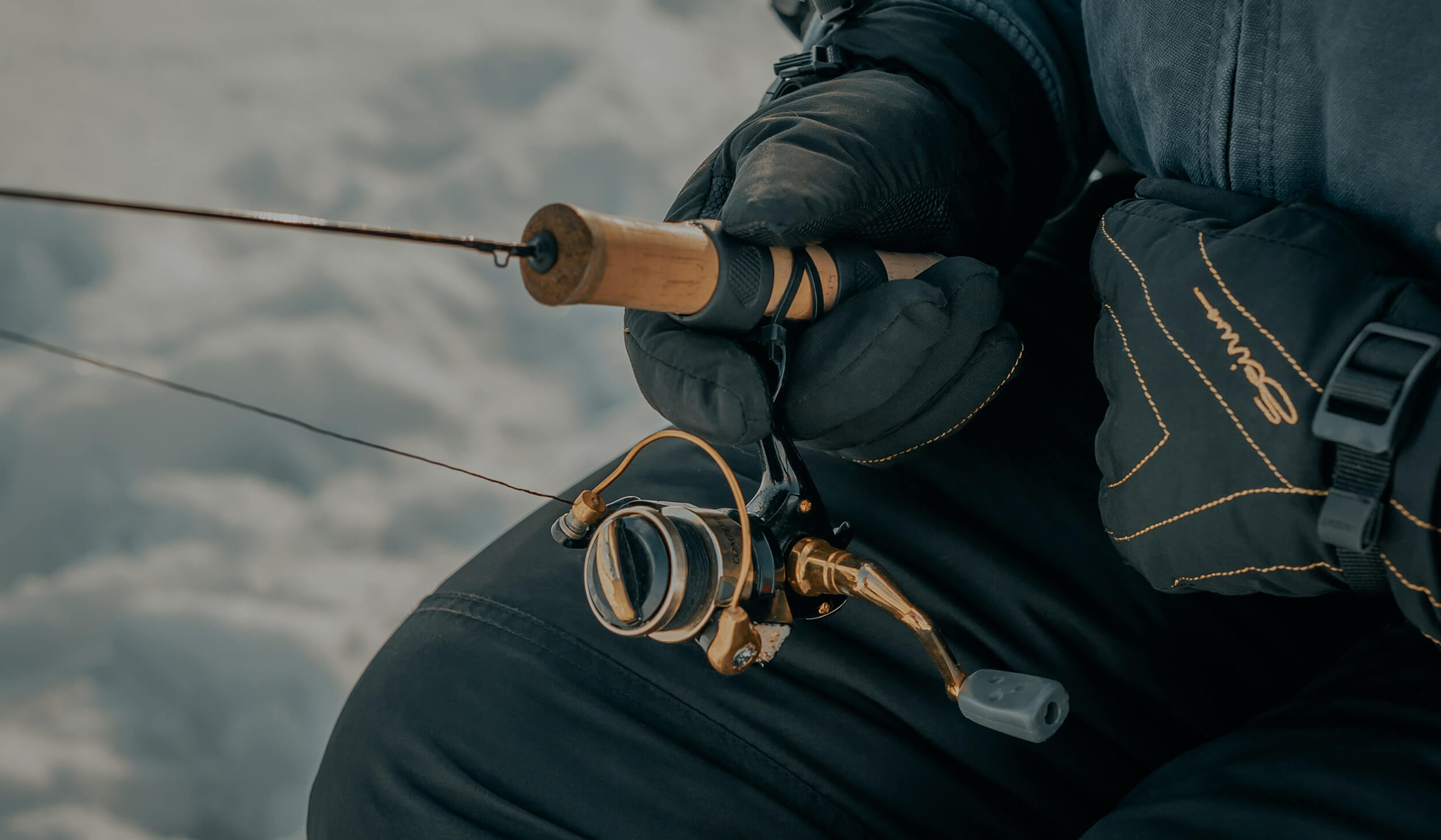
Rescue
Fishing begins with lifting the working arm with the tackle up (you can stand with your back to the wind, some anglers even move away from the hole). Next, you need to intercept the fishing line with your second hand (always protected) and raise it as high as possible. The rod should be thrown in the direction of the wind (if the trophy is small, then you can just carefully put it).
The line is alternately intercepted by hands, keeping it taut. If the trophy is large enough, you need to pause with a slight release of tension, and then pull the thread again, working exclusively with brushes with a small amplitude. In this case, you need to make sure that the fish does not scour under the ice outside the hole: it will be much more difficult to remove it from there, especially if the jig hook snags on the back of the ice.
It is advisable to do the last pull-up of the fishing line with your left hand, and remove the fish with your right hand, picking it up with your fingers under the gills. If the size of the prey is large (and even trophy bream and pike are caught on the jig), it is advisable to use a hook, otherwise the line may not withstand the stress.
Features of catching fish of different types
As mentioned above, there are no universal lures and wires, the choice depends on many factors. But, for the most part, white fish loves smooth postings with a large amplitude and decent pauses, a predator – a more active and sharp game.
Let’s go over the preferences of the main potential trophies:
- Bream . Bream is practically inactive in winter, so only experienced fishermen purposefully hunt for it. Usually, medium jigs with a bloodworm infusion are used. In terms of deafness, fishing is most effective “on the riser” (without playing) at night, with abundant feeding of dumps and edges near wintering pits. On the first hand, in the hands of professionals, a medium-sized rewinder works.
- Roach . Roach is a common trophy for the winter fishing angler: this fish remains relatively active even in the bitter January frosts. Active search tactics work best, with the exception of very deaf days. It is best to catch this fish with ultralight fishing rods without reels and a jig with a bloodworm or maggot attachment. For the first and last ice, you can experiment with the rewinder. Smooth play without sudden jerks is encouraged.
- Crucian carp . Crucian carp, especially large, is not very active in winter. Golden bites are extremely rare, but you can hunt for silver. For this, the simplest and most inconspicuous jigs are usually used, without bright accessories, but the nozzle should be extremely appetizing. Mothless people purposefully go to crucian carp rarely.
- Perch . Gluttonous sailors are not particularly whimsical and active at any time of the year; the humpback is much less common. Perch loves dregs, so any wiring should include tapping on the bottom. In the wilderness, a monotonous game is used, at other times it is more chaotic. You can experiment with postings as you like. When fishing with a reel at great depths, bright colors and a very brightly marked point of attack (such as a bead in a “cat’s eye”) are welcome.
- Pike . To catch a toothed torpedo, super-heavy lures are used, which are only nominally jigs. Rather, these are winter lures, tackle (winter spinning rods) and wiring are used similar. When using cone-shaped bait baits, it is necessary to supplement in the form of pieces or whole fish, bundles of worms (sometimes all sorts of exotic things are used, such as dyed udders). We must not forget about the need for a leash: on the first ice, you can also use a metal one, but in deafness it is better to replace it with fluorocarbon.
- Pike perch . The use of heavy jiggers in the wilderness is especially effective, when purely artificial lures such as winter lures or wobblers do not attract the fanged. In the role of jigs, jig heads are often used for silicones and ” kaplja uralka ” jigs. Fishing is usually carried out “upstream”, downstream. The “devils” show themselves well from the rewinder. At great depths, fluorescent baits are good.
- Burbot . Freshwater cod is very supportive of the winter season: it is active, it catches well with heavy jig, especially on the eve of spawning, which occurs in February. As the basis of the rig, a fairly rigid rod for winter lure is suitable. The marmooska is used super-heavy, in several tens of grams, always with the addition of fry or fish cutting. As a complementary food, water is poured into the hole with fish remains (blood, offal, scales, and so on). The main wiring is tapping the bottom. The main thing is to find a place for burbot, which is problematic without an echo sounder.
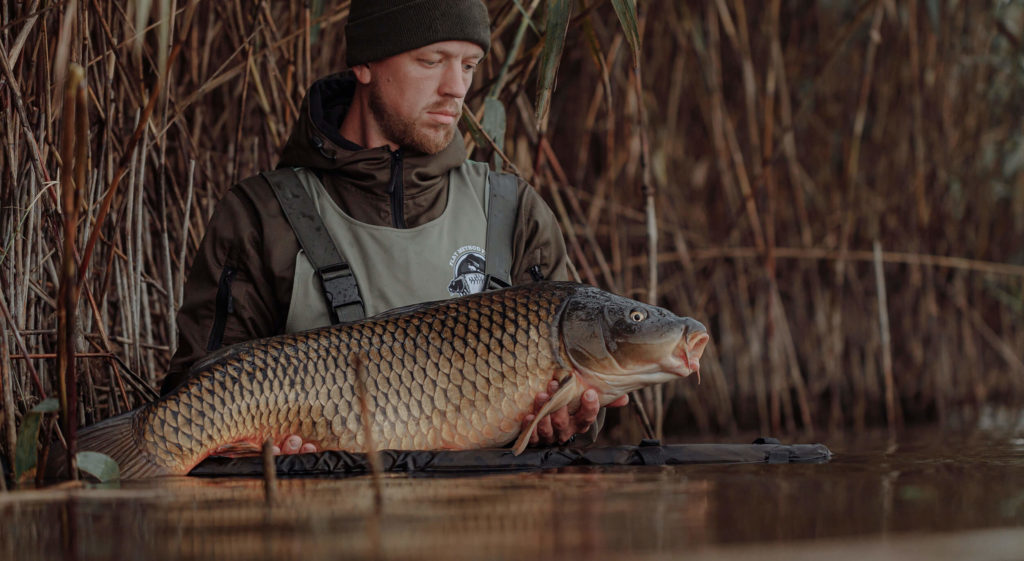
Fishing tips
By tradition, at the end of the publication, we give several recommendations for novice anglers:
- Start simple . In this case, the simplest thing is stationary fishing “on a riser”, then switching to a game with a nozzle, and only after that – a rewinder animation.
- Don’t chase the amount of gear . For the first time, two or three tackles equipped for various conditions and a dozen spare lures are enough. Give preference to the classic options until you gain experience.
- Arrange the fishing spot . This is especially true for lovers of stationary fishing, who sit on a limited square with holes for hours. Shovel snow from time to time, remove fragments of ice, take care of your own comfort and heat retention in every possible way.
- Store your gear and inventory properly . When fishing and outside, store your jigs in special containers with a foam cushion, sorting them by type, weight and diameter. When fishing, the entire economy is stored in a fishing box, at home it is thoroughly wiped and dried. Pay special attention to the care of the ice screw – this is the most expensive component of a winter angler’s equipment.
- Pay attention to the line while driving . The thread should not touch the edges of the hole under any circumstances, so carefully monitor your own movements and, at first, choose simpler wiring. But do not be afraid to experiment – if it doesn’t bite, then you need to change the style, the bait, and maybe the place.
- Don’t forget about your own safety . On the first day, for lovers of mormishing, a golden time is coming: fish are well caught even by beginners, you can not look so carefully for a place and follow the posting technique. An active search during this period is the most it, but in the heat of excitement it is easy to forget about your own safety. Go out on the ice only when its thickness reaches 5-7 cm, check its condition along the way, and hang “lifeguards” around your neck – a special device with which you can get out of the water on your own.
Winter jig fishing is a great hobby: affordable, rewarding and full of excitement. We guarantee that with each ice trip you will get more and more pleasure, and the scale of the catch will increase in proportion to the growth of individual skill!

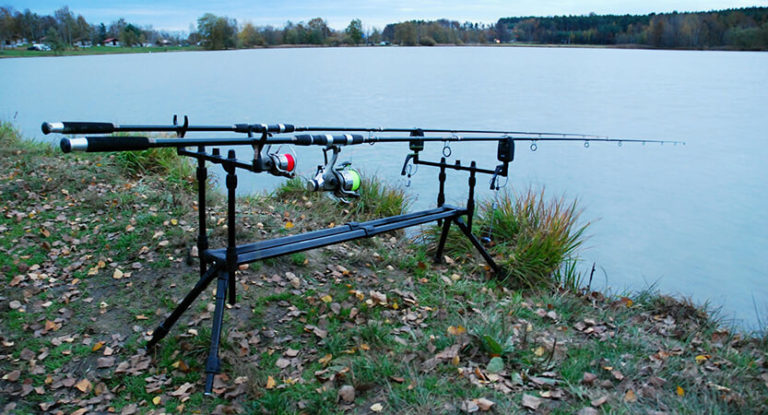
![The 8 Best Fly Reels in 2023 [Buyers Guide] 12 The 8 Best Fly Reels in 2023 [Buyers Guide]](https://trizily.com/wp-content/uploads/2021/12/fly-reel-768x415.jpg)
